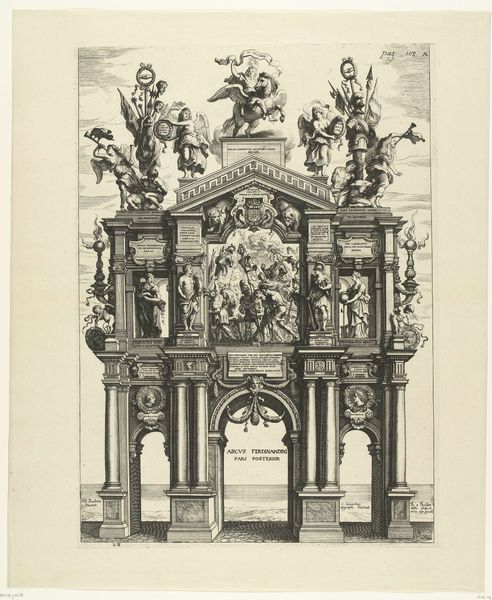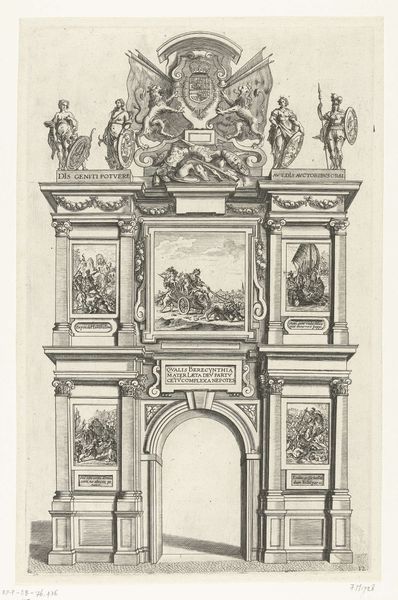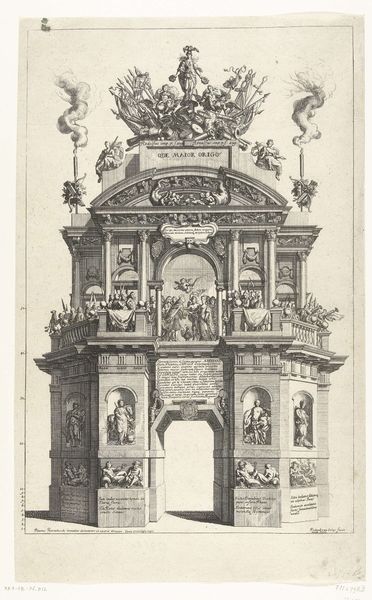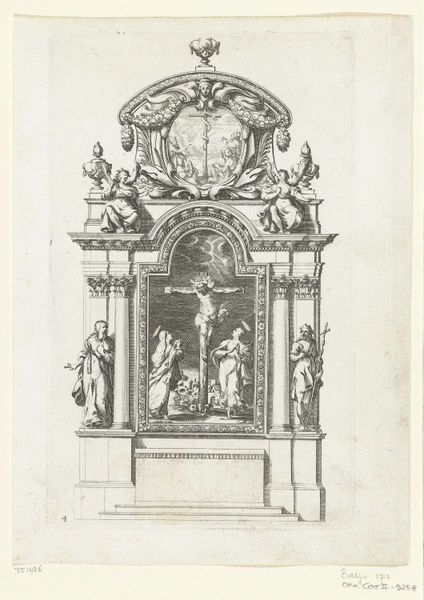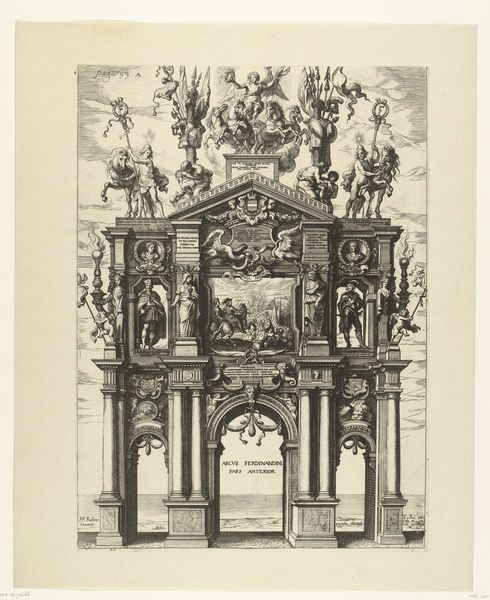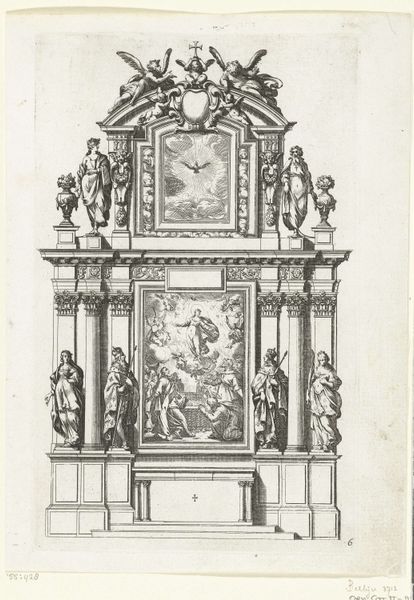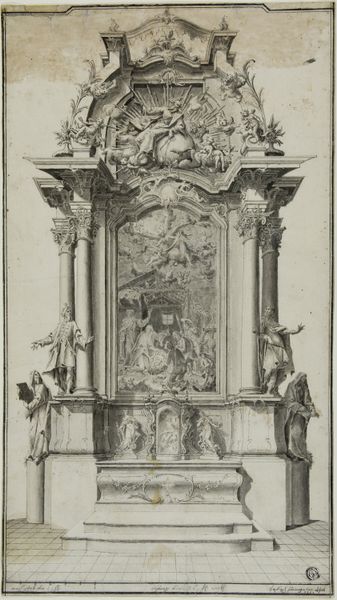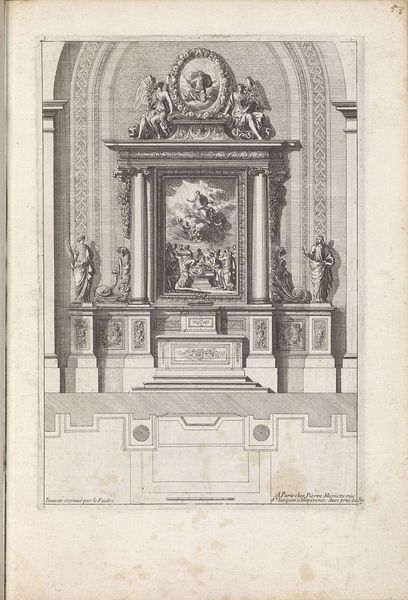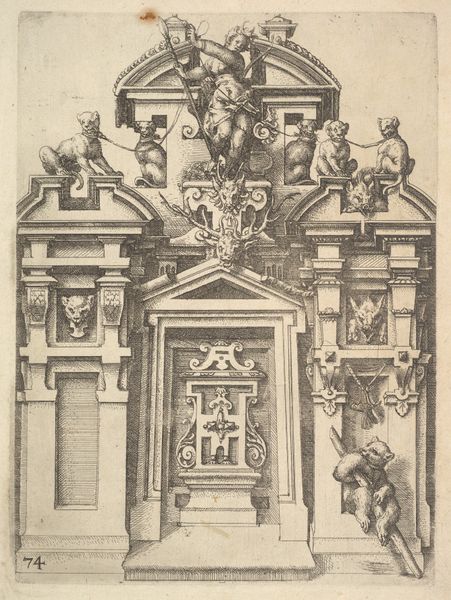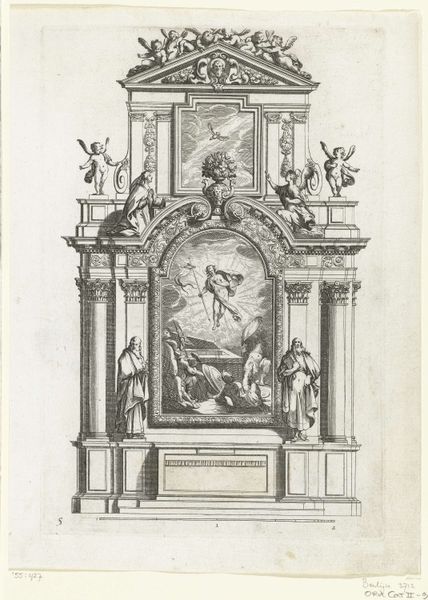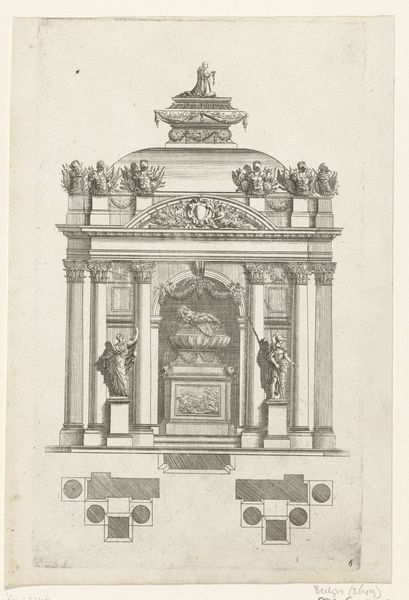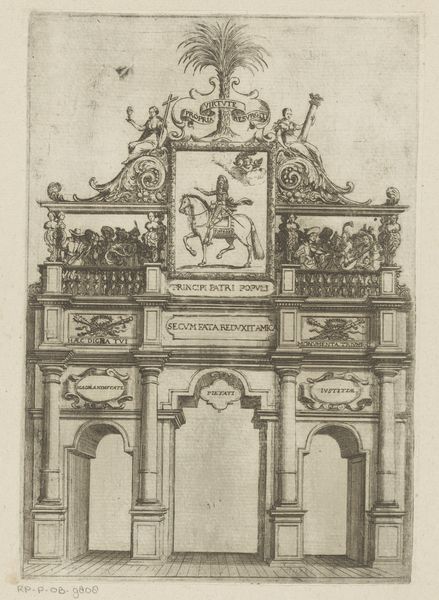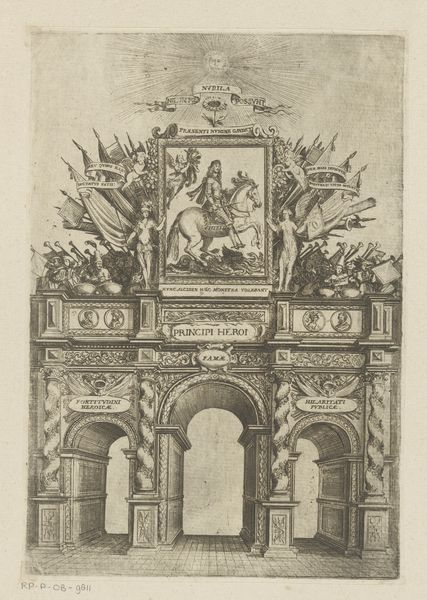
drawing, print, engraving, architecture
#
drawing
#
allegory
#
baroque
#
pen drawing
# print
#
figuration
#
line
#
history-painting
#
engraving
#
architecture
#
realism
Copyright: Public Domain: Artvee
Editor: Here we have "The Triumphal Arch of Ferdinand," a drawing by Peter Paul Rubens. It looks like an engraving or a print, focusing on line work. It feels grand and celebratory. I'm struck by how architectural it is, but also by the incredibly detailed figuration all over the surface. What do you see in this piece? Curator: Beyond the immediate celebratory impression, I see a complex layering of materials and processes. This work wasn't just "drawn"; it involved the labor of numerous artisans. Consider the paper itself, its manufacture, its cost, the ink, the engraving tools. These weren’t simply artistic expressions, but products of specific workshops and economies. Rubens, a master of his domain, contracted the making of this print to specialists, meaning the arch existed as both an image and an actual built object meant to reinforce social and political order. How does that perspective change your view? Editor: That’s interesting! It makes me think about who had access to this image and what its distribution meant in terms of social power. So the creation of a single image, from the architecture that served as a source to the engraving itself, becomes almost an industry. Curator: Precisely! The dissemination of such imagery reinforced power structures, mirroring the triumphal arches erected for rulers and the complex socio-economic system that permitted the production and distribution of imagery for political gain and propaganda. The Arch, in this image, acts as both tool and symbol of labor and social context. Does that affect your initial impression of grand celebration? Editor: Absolutely. Knowing more about the means of production gives the image a different edge; it's celebratory, but also a declaration of economic and social control. It becomes a material record, beyond artistic skill. Curator: Exactly. And that tension between artistry and the reality of its material construction, production, and deployment is where its true power lies, or at least where we can understand more about that power in its own time and still now.
Comments
No comments
Be the first to comment and join the conversation on the ultimate creative platform.
